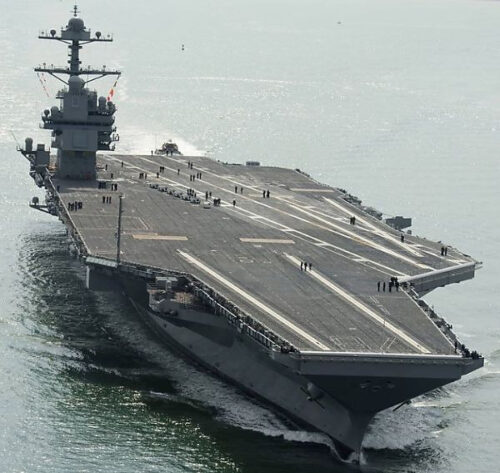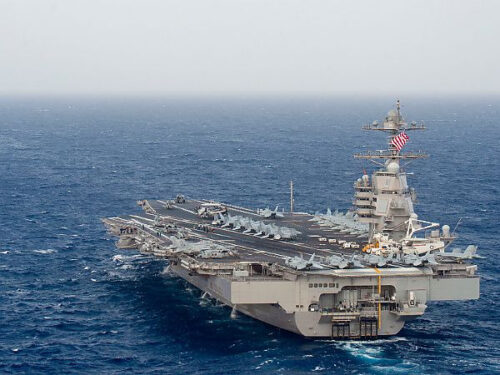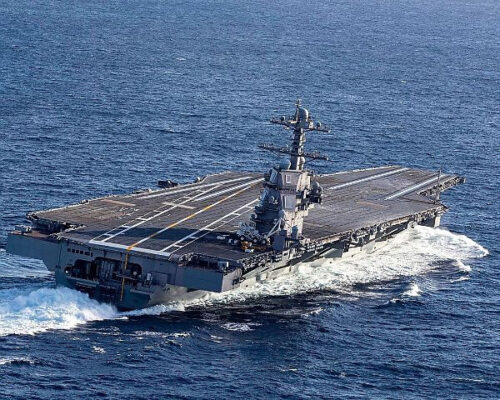
The USS Gerald R. Ford, the largest aircraft carrier in the world, has made waves in the naval realm. With a length of 337 meters and a staggering price tag of $13 billion, this colossal US Navy flagship is designed to accommodate more than 75 aircraft.
As part of the Ford-class carriers, each ship in this series incurs a total cost of ownership of $4 billion over its 50-year service life.
The USS Gerald R. Ford represents a symbol of prestige and power for nations across the globe, serving as a floating base for airborne operations and showcasing the pinnacle of naval engineering.

As of 2021, there are an estimated 46 operational aircraft carriers in service across thirteen countries worldwide. However, the USS Gerald R. Ford stands as the largest of them all.
These immense aircraft carriers are equipped with an expansive flight deck capable of carrying, launching, deploying, and recovering various types of aircraft.
From fighter jets to helicopters, the USS Gerald R. Ford serves as a floating fortress that exemplifies the strength and capabilities of modern naval forces.

The lead ship in the Ford-class carriers, the USS Gerald R. Ford, was named after the 38th President of the United States, Gerald Ford.
It was commissioned by President Donald Trump on January 22, 2017. The USS Gerald R. Ford, with a price tag of $13 billion and a length of 337 meters, can accommodate over 75 aircraft and house a total of 4,539 personnel.
The USS Gerald R. Ford represents a groundbreaking addition to the US Navy’s fleet, replacing the retired USS Enterprise (CVN-65). With its immense size, advanced capabilities, and the ability to host a wide array of aircraft, this floating fort serves as a testament to human engineering and naval power.

